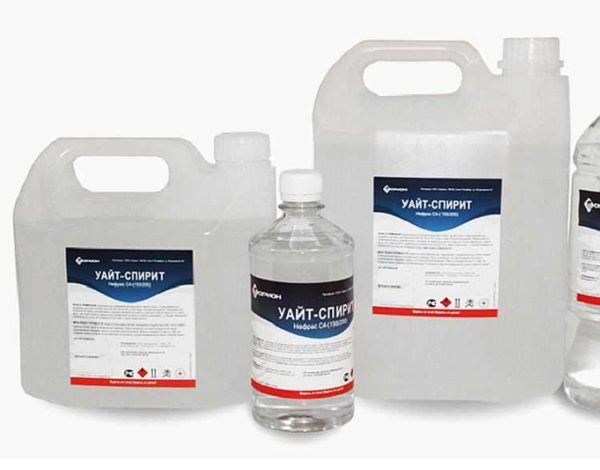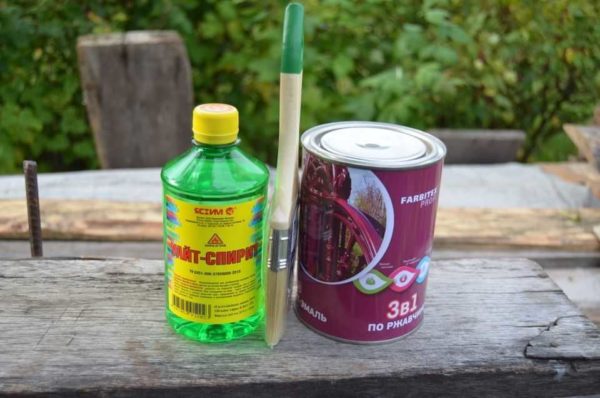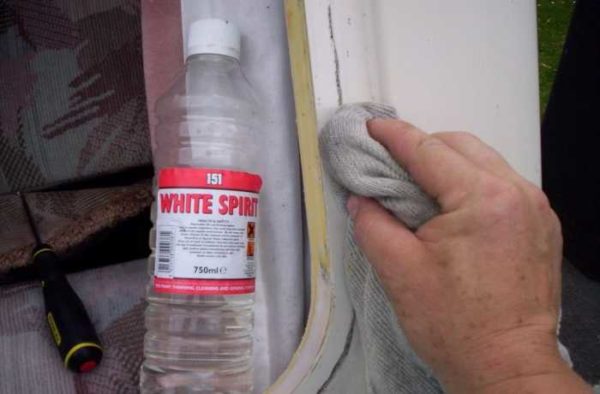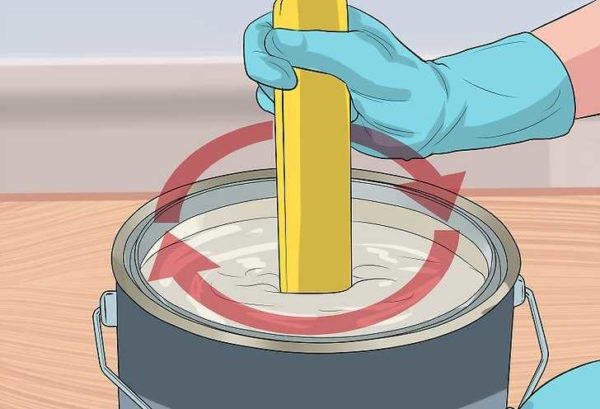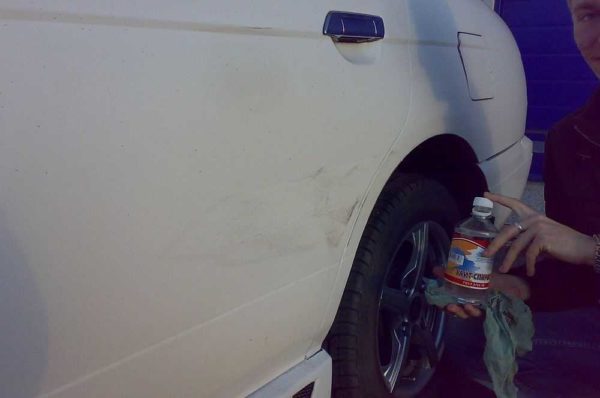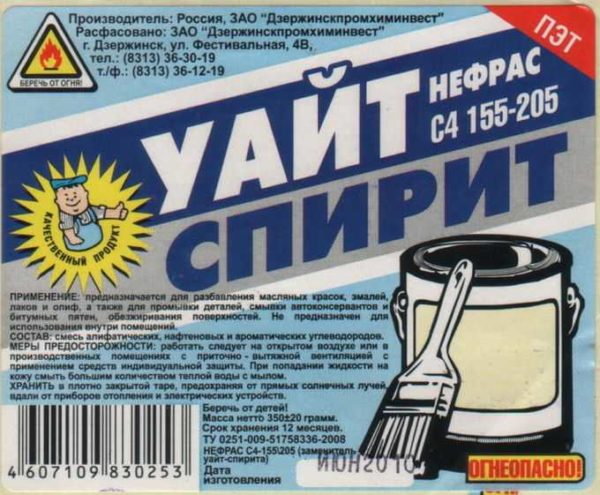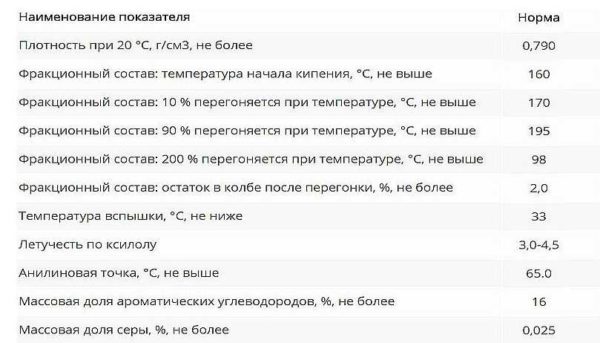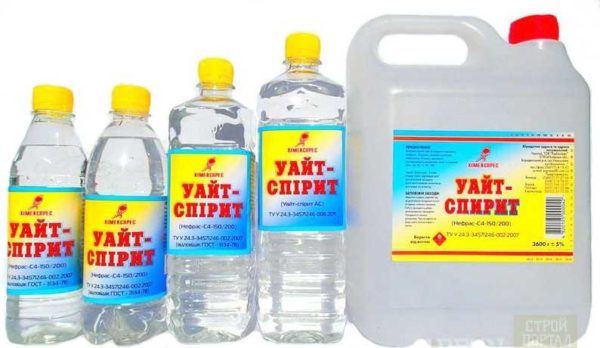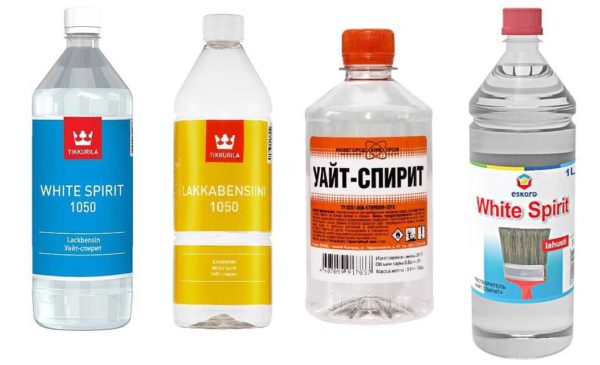What is white spirit solvent and where to use it
During repair and construction work, it becomes necessary to make paint, mastic, putty not so thick. For this, solvents are used - special compositions that do not change the properties of the starting material. One of them is white spirit. This is probably the most inexpensive and popular remedy with similar properties.
The content of the article
What is white spirit
White spirit is one of the organic solvents that is obtained by direct processing (distillation) of oil. The name of this solvent is a transliteration of the English name - white spirit, which literally translates as "white spirit". It is a transparent, slightly oily liquid. Refers to substances with a low level of danger (group 4), but with prolonged inhalation of vapors, symptoms of poisoning may appear.
White spirit contains a significant amount of volatile substances (according to GOST 3134-78 no more than 16%, according to TU - whoever wants it), which gives it a specific smell. To reduce the discomfort, add substances that smell more pleasant. It is difficult to say that this improves the situation, but ...
In fact, white spirit is one of the types of kerosene (light fractions) or dehydrated refined gasoline. Contains a greater amount of volatile and "aromatic" substances, therefore it is rarely used as a fuel, as it releases little heat.
White spirit does not have a specific formula, since it is performed by distillation and the composition depends on the feedstock. Some species - with additional post-treatment - have a weak odor, due to the greater number of cleaning stages. The odorless solvent is usually of Western origin. It has a more complex purification technology, but the dissolving power is lower and the price is higher. Nevertheless, it is also quite popular, since the absence of smell is often important - with prolonged work with paints, for example.
Application area
White spirit is used mainly as a solvent for any fractions of oil, sulfur compounds, nitrogen, oxygen. It can also dissolve vegetable fats. The ability to dissolve fats is used if it is necessary to clean the surface before priming, painting, etc. It is actively used before applying paint and varnish coatings (LKP) to metals.
For cleansing
You should not use this solvent to clean fabrics or highly absorbent surfaces - you will struggle with the smell for a long time. It is very difficult to defeat him. The most effective way is hot (superheated) steam treatment. So that the substances that give the smell are heated and volatilized. It is worth knowing that white spirit begins to boil at 165 ° C, and evaporates completely at 200 ° C. If the surface is heated to a similar temperature, the volatiles evaporate and the odor is reduced.
There are no such problems with smooth surfaces - it evaporates instantly. Outdoors or in a well-ventilated area, the smell is faint. During renovation and construction, white spirit can be used to remove old paint, fillers, oil and grease stains. Another useful property is that it well removes glue that remains after removing the adhesive tape, rosin stains.
White spirit is also used to degrease natural leather. Since there is no chlorine in the composition, it does not change its properties, color and texture. It can be used to protect or "cure" wood from mold and mildew.The liquid penetrates deep into the pores, destroying the source of damage. In addition, the paint adheres better and the consumption is reduced. That is, white spirit can be used as a primer and antibacterial protection for wood.
As a solvent
Despite the fact that the dissolving power of white spirit is average, it is often used to dilute many formulations to the desired consistency. In this case, a solvent is introduced into the composition, and not vice versa. Mix thoroughly until smooth. As a solvent, white spirit is used with the following formulations:
- oil paints;
- antibacterial impregnation for wood;
- drying oil;
- alkyd enamels;
- alkyd varnishes;
- bituminous mastics;
- rubber mastics.
When combined with paint, white spirit reduces its viscosity. The composition is better applied and distributed, and consumption is reduced. But it is worth remembering that after drying, the surface will be glossy. If you need a matte finish, look for another solvent.
Diluted to a more liquid state with white spirit and putty. But only those that have an appropriate basis:
- ML - melamine,
- M - oil and alkyd styrene;
- PF - pentaphthalic;
- MCh - urea;
- VN - divinylacetylene.
White spirit is popular among car owners as a means for removing car mastics. Cleans all bitumen-based compounds and slate mastics. It removes well the lubricants with which the parts are treated for corrosion protection (auto preservatives). Just remember that the liquid is highly corrosive. That is, you should not allow prolonged contact with the surface. If a puddle has formed, it must be quickly removed, the place is wiped dry.
Properties and characteristics
As already mentioned, the characteristics and properties of white spirit are standardized: GOST 3134-78. But it is very difficult to find a solvent made in accordance with GOST on sale. Most of them are produced according to technical specifications, which have their own rules. In particular, the maximum volatile content changes.
For example, Nefras-S4-155 / 205 is widespread. Its quality characteristics are lower than those required by GOST. But it is produced according to TU, which does not contradict the legislation. The list of GOST requirements is given in the table.
Pay attention to characteristics such as flash point. According to GOST it is + 33 ° C. This means that when heated to this temperature, a fire is possible. So you have to be very careful when using and storing. There is one more feature - the liquid accumulates a static charge. Therefore, the container is plastic or glass.
Storage and use
White spirit is a flammable substance (category 2), auto-ignition temperature 270 ° C. Vapors mixed with air create an explosive mixture. Considering these features, pay special attention to the storage location. This solvent should be kept in a dark, cool, well-ventilated area, out of the reach of sunlight. There should be no heat sources nearby, including heating devices. The shelf life is usually indicated on the bank, but it is not important. If the inside is liquid, not jelly, it can be used.
When opening and operating, the following requirements must be met:
- Work outdoors or in a well-ventilated area.
- It is unacceptable to be near open flames or sources of sparks.
- When opening the container, stirring the compositions, do not use devices that can generate a spark.
- White spirit begins to evaporate at a temperature of + 20 ° C. For quick drying of paint, mastics, putty, it is necessary to work in the warm season or in a warm room.
- If the solvent is spilled in the room, open windows and doors as much as possible - collect and take out of the room. The place where the white spirit was spilled, wipe with a rag. To remove grease stains, you can use grease-dissolving detergents. If spilled on the street, cover the puddle with sand, which then take out.
- In case of fire, do not extinguish with water. Apply foam, sand, powder, felt.
According to the degree of impact on the human body, it belongs to substances with a low hazard. In contact with the skin, it can cause burning, dermatitis and allergic eczema. Therefore, it is better not to allow even short contact. The best thing you can do is wear gloves. If you have to work for a long time indoors, it makes sense to wear a respirator.
Which is better: ours or imported?
Despite the fact that the production technology is the same, imported white spirit has a weaker smell (and higher prices). This is due to the fact that the product goes through more stages of purification, which rid it of volatile compounds. It's good - it's easier to work, there is no headache and all other symptoms.
The bad news is that the dissolving power decreases during the cleaning process. This means that the flow rate will be higher. This is if we talk about adding to paints or mastics. The second point is that the stains will be rubbed off worse. This is if you use the substance as a stain remover. On the other hand, if you try to remove the stain from the fabric with white spirit with a low degree of cleaning, it will be extremely difficult to get rid of the smell (note that repeated washing does not help). It is clear that the less odorous the liquid, the easier the problem is solved. Perhaps for this reason, some manufacturers produce this type of solvent in several degrees of purification (for example, Tikkurilla - with blue and yellow labels). Different tools for different tasks.

